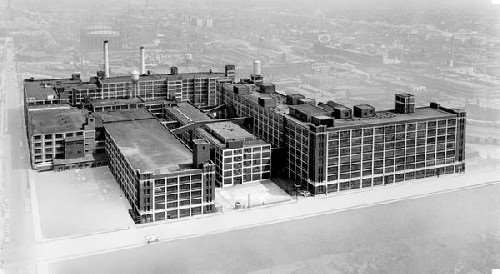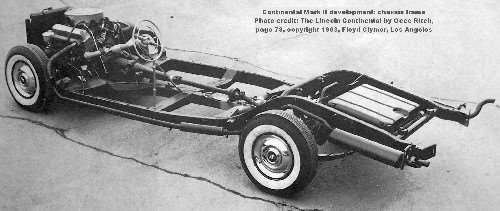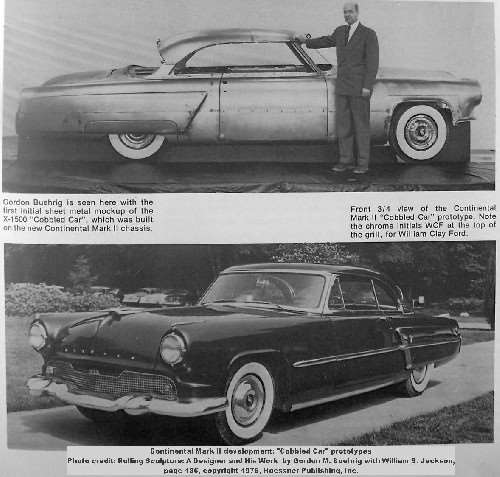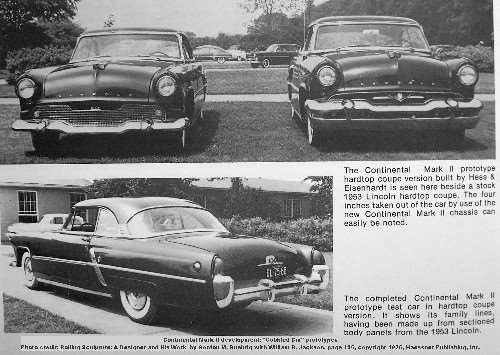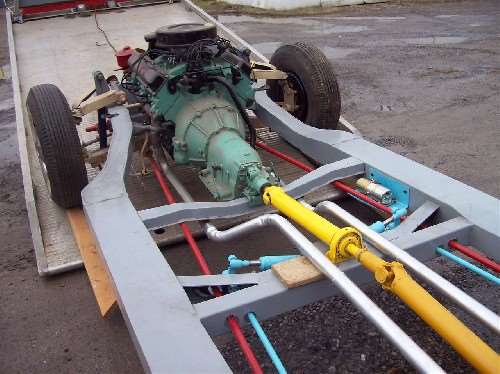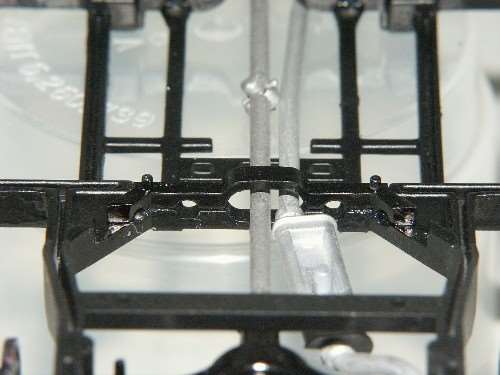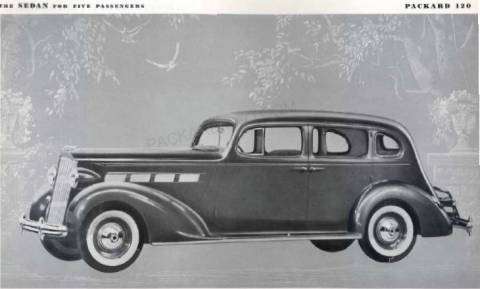|
Re: SP merger
|
||||
|---|---|---|---|---|
|
Home away from home

|
You are correct Ford couldn't make money on the Continental MkII and they couldn't make money on the 2 seater Thunderbird either.
But they replaced the Tbird with the very Continental like 4 seater Tbird in 1958 and it was a sales smash, one of only 2 cars to increase sales and production in 1958 (the other was Rambler). The next Continental was a dolled up Lincoln hardtop which cost comparatively little to make. The Studebaker coupe got complaints of too little interior room and trunk room even from Studebaker buyers. No doubt traditional Packard buyers would have felt the same. But, that is the price of being fashionable. The Continental got similar complaints from traditional Lincoln buyers. I don't know if a Packard sports car using the Stude body would have worked, if it would have sold or made money. Somehow I doubt it. It would have been a way to get publicity and have something unique to sell but on the whole, it is probably better they didn't try it.
Posted on: 2015/4/10 0:25
|
|||
|
||||
|
Re: SP merger
|
||||
|---|---|---|---|---|
|
Home away from home

|
Hi
"But, that is the price of being fashionable." For context, here are photos of the Continental Mark II prototypes and chassis frame. It would have been very difficult to create a low-profile halo car to compete with the Mark II without a frame developed just for that purpose. The '53 Lincoln comparison to the 'Cobbled Car' 56" height is illuminating; the 62.7" tall Lincoln being within Packard's 62.8" and 62.4" height range. Current owners of the Pan Americans and Panther Daytona should weigh in giving us their perspective as to driving position and general ergonomics. Simply a guess, but as great as they look, are less-than-confortable to drive very far. Steve203: Thanks for the photos of the Murray complex. Nance was sold on the one-story plant by optimistic assumptions and erroneous projections peddled by Grant and Powers. Having no real auto manufacturing experience to draw on for comparison, it seemed completely plausible, no need to consider the unintended consequences. Taking an option on the Murray plant was just adding more floor space while major portions of EGB sat empty.........not savvy management, more likely just grabbing at straws. One supposes he planned to procure all the stamping presses, jigs and fixtures in place to create instant body plant. Steve
Posted on: 2015/4/11 11:37
|
|||
|
.....epigram time.....
Proud 1953 Clipper Deluxe owner. Thinking about my next Packard, want a Clipper Deluxe Eight, manual shift with overdrive. |
||||
|
||||
|
Re: SP merger
|
||||
|---|---|---|---|---|
|
Home away from home

|
"The first references to the V8 were in August 1950 on the progress made, that both 269 and 309 CID units were under development. ... Quite a conundrum: more sales were needed to finance the V8 but present sales were being hampered by external restrictions and the very lack of a V8 in the first place."
Steve - thanks for sharing, is incredibly illuminating and the conundrum that you state speaks directly to business fundamentals no matter the era. Some see challenges as opportunities, others with indifference or fear. Your nicely put slippery stone comment about Romney points to the upside potential. Why didn't Packard do something with its powertrains for the all-new 1951's, if only conversion of its straight eights to OHVs? Would have involved minimal tear-up to its engine line. AMC did this with its Rambler Six for 1956 and saw a 20% increase in power. Similar increase seen with Studebaker's Six conversion for 1962. Packard and Hudson seemed to have a hang up with OHVs. And why did Packard set the engine size so low... 269 and 309 displacements? More evidence that the company had no interest in making a proper Senior to take on the 60 Special.
Posted on: 2015/4/11 14:39
|
|||
|
||||
|
Re: SP merger
|
||||
|---|---|---|---|---|
|
Home away from home

|
Steve - those Conti images are incredible! Never knew Lincoln made that protoype, clearly shows the benefit of lowering the beltline even with same greenhouse. Hudson struck gold 10 years before the rest and had it and Packard united to develop ultra low cars for '54 or '55, the business case for a shorter wheelbase Packard four-place coupe would have been that much easier. Cadillac played this opportunity perfectly with its '55-58 Eldorado, locking in on the minimal tooling needed to get the customer to pay $2000 more for a car with a material cost not much higher than car it was based on.
Posted on: 2015/4/11 15:02
|
|||
|
||||
|
Re: SP merger
|
||||
|---|---|---|---|---|
|
Home away from home

|
Quote:
Interesting. I had not seen a Mark II frame before. It is interesting to compare it to a reconstruction of the frame from the "Black Bess" 57 prototype. They both have a two piece driveshaft running above the frame crossmembers. The exhaust pipe routing on the Black Bess frame, above the crossmembers would never work in the real world as the pipes would be very difficult to replace, and pipes rusted out fast back then. I'm not crazy about the Lincoln choice of running the pipes along the outside of the rails, behind the rocker panels either, as that would create a wider sill for passengers to step over. Still prefer my way: start with something like the Lincoln chassis, but run the crossmembers straight across, instead of bowing them down like Lincoln did, and kick the passenger compartment floor up under the seats to provide room for the higher crossmembers. With the crossmembers out of the way, there would be plenty of room for torsion bars and exhaust pipes.
Posted on: 2015/4/11 19:02
|
|||
|
||||
|
Re: SP merger
|
||||
|---|---|---|---|---|
|
Home away from home

|
Here's a pic of Black Bess next to a prewar Packard. Seems I remember seeing Black Bess posed next to a mid 50s sedan and the comparison looking like your Lincoln pic. There doesn't appear to be any physical problem with lowering the Packard roofline, to keep in step with the competition, in the late 50s As stated above, it requires a new frame that allows a lowered floor.
As to the concerns with driving comfort in the lower profile Packard show cars, the archivist at the Studebaker museum, Andrew Beckman, is of average height and weight, about 6'. He has driven the Predictor, which is built on a stock Clipper frame, and he has said it is really cramped and uncomfortable. Attach file:  (20.34 KB) (20.34 KB)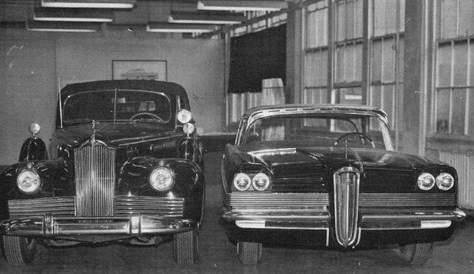
Posted on: 2015/4/11 20:03
|
|||
|
||||
|
Re: SP merger
|
||||
|---|---|---|---|---|
|
Home away from home

|
I like your frame idea, Steve203. Took another look at the link to Hudson scale model that you had previously posted. Shows exhaust and driveshaft routed under front seat cross member and over rear seat cross member. There is also a mid-length cross member. Wonder if Hudson could have arched the rear cross member to allow routing under rather than over it. Maybe they preferred straight-across members to channel the loads more efficiently.
I think the Predictor image shown next to '42 is a fiberglass model rather than Black Bess.
Posted on: 2015/4/11 20:58
|
|||
|
||||
|
Re: SP merger
|
||||
|---|---|---|---|---|
|
Home away from home

|
Quote:
Actually, the Hornet driveshaft and exhaust are going through a hole in the rear crossmember, just as the mid 50s Packard driveshaft went through a hole in the junction of the X member in the middle of the frame. Why Hudson did it that way, I don't know, as that hole would make the crossmember weaker. One though comes to mind: maybe the rear seat had to be set lower to maintain headroom because of the semi-fastback styling of the car, as the roof over the back seat is lower than over the front seat. We know what a stickler for adequate head and hat room Barit was. With a taller roofline, like Packard used, the rear seat, the rear floor kickup and rear crossmember could all be raised.
Posted on: 2015/4/11 21:27
|
|||
|
||||
|
Re: SP merger
|
||||
|---|---|---|---|---|
|
Home away from home

|
Hi
Another spoiler alert: Don't read the next three paragraphs if you want to discover these revelations as you read Mr. Neal's 1951-1954 text: "Why didn't Packard do something with its powertrains for the all-new 1951's, if only conversion of its straight eights to OHVs?" ........"And why did Packard set the engine size so low... 269 and 309 displacements? More evidence that the company had no interest in making a proper Senior to take on the 60 Special." By August 1950 with V8 engines in development, this implies management had decided further straight eight modification was futlile. Mr. Neal opined the initial prototypes were sized to provide the horsepower output of the current engines in a smaller, presumably more-efficient package. The idea of matching or bettering the competition apparently wasn't their motivation. More realistic would have been 309 ci and something in the 330-350 ci range to exceed both Olds and Cadillac, and the upcoming Chrysler Hemi. Further from Mr. Neal; move forward to March 1952 when Nash's interest enters the picture. By September, discussions with Nash had progressed to sharing of development costs, the Packard engines sizes under consideration were 302 ci and 333 ci and an underdetermined smaller unit for Nash. The engines sizes evolved further after Nance arrived, by January 1953 something in the 330 ci range is cited by Graves but in the context of an dismaying revelation! Nance sent Grant and Graves to seek a V8 from a proprietary engine builder for the 1954 models as interim until their own V8 would be ready for 1955! As you might guess, the only source was Continental Motors. Imagine, the Master Motor Builder turning to a outside source for V8 engines to power their cars! What had they become: Kaiser-Frazer? Fortunately, no suitable engine was in Continental's current portfolio, only a 260-270 ci unit in development. Potential customers mentioned for it were Kaiser, Nash or Hudson. As far as fielding a series to compete with the 60 Special, any idea of that had been dismissed when Karl Greiner argued for and management conceded there would be no successor to the 1950 Custom Eight. 1951-'52 Patricians soldier on in opposition to the Cadillac Series 62 but anyone looking for a premium sedan not from Cadillac had only the Chrysler Imperial to consider. The lack of just such a car was leaving money on the table and customers looking elsewhere. Although it would be inaccurate to suggest Packard would sell premium sedans above the Patrician in the percentages Cadillac did, such a market did exist. One that could have been better exploited than by the Derham Formal Sedans which were rather pricey, well beyond the sweet-spot of $700-800 above the standard luxury sedan. One such demonstration of sorts was the Kaiser Dragon. For 1951, the Dragon variation of Kaiser Deluxes rendered distinction by padded tops and unique color combinations as well as 'mandatory' options standard as part of the trim package. Pricing added a few hundred dollars to the standard Kaiser Deluxe bringing it to around $2,500, resulted in approximately 1000 sold. In the days when options were high profit items, Packard could have employed such a strategy just as well as K-F did. Where Kaiser really made out well beyond reasonable expectations was the 1953 Dragon, priced at $3,924 (Cadillac 62 sedan $3,666) versus their Manhattan at $2,650. Those premium prices still netted 1,277 buyers. Considing they were nothing more than dolled-up Manhattans loaded with Hydramatic, "Bambu" vinyl top and special interior trim, deluxe wheelcovers, gold-plated hood ornament and nameplate and multiple 'mandatory' options adding to the prestige aura, powered by a forklift engine: smart marketing to the Kaiser loyalist et al. Steve
Posted on: 2015/4/15 17:45
|
|||
|
.....epigram time.....
Proud 1953 Clipper Deluxe owner. Thinking about my next Packard, want a Clipper Deluxe Eight, manual shift with overdrive. |
||||
|
||||

